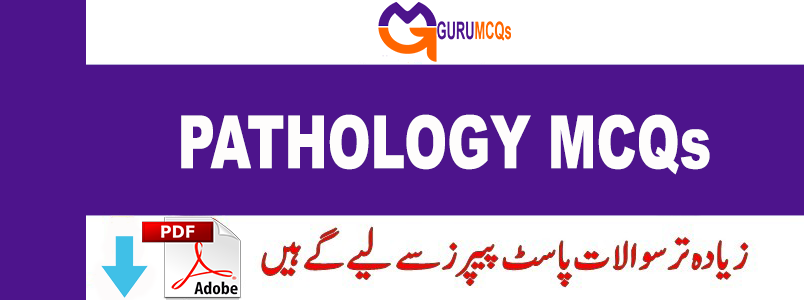
GuruMCQs.com provides all updated Pathology MCQs. MCQs of Pathology content are updated regularly, with the addition of new topics, more questions, and useful links. Repeated pathology MCQs consist of Primary Cardiovascular, Primary Cellular, Primary Endocrine And Renal, Primary Cellular Pathology, Cell Injury, General Pathology, Organ System Pathology, Atherosclerosis-Thrombosis, Embryology, Neoplasia, Nutrition, Transfusion Medicine, Coagulation – and much more.The topics covered here are sourced from reliable and top-quality reference books on pathology. These multiple-choice questions (MCQs) in pathology serve as valuable resources for various purposes such as interview preparation, entrance exams, competitive assessments, and certifications for individuals at all levels of experience, including experienced professionals, newcomers, and students. Additionally, you can find MCQs on oral histology for further exploration.
31. Which of the following predisposes to thrombogenesis ?
A. Endothelial injury
B. Stasis of blood
C. Turbulence of blood
D. All of the above
32. Active hypermia is seen in_______________?
A. Muscles during exercise
B. Inflammation
C. Blushing
D. All of the Above
33. An infarct is most frequently is characterized by What type of necrosis ?
A. Fatty
B. Caseous
C. Gangrenous
D. Coagulative
34. Partial or complete obstruction of some part of the C.V.S by a foreign body transported by the blood stream is termed as_____________?
A. Thrombosis
B. Coagulation
C. Ischaemia
D. Embolism
35. Caissons disease is caused by______________?
A. Amniotic fluid embolism
B. Hyper coagulability
C. Air or gas embolism
D. Tumour embolism
36. In a thrombus, the dark lines of zahn are due to_______________?
A. Coagulated fibrin
B. Aggregated proteins
C. Aggregated platelets
D. Aggregated R.B.C
37. Nut meg liver occurs in_______________?
A. Jaundice
B. Chronic venous congestion
C. Cirrhosis
D. Hepatocellular carcinoma
38. Heart failure cells are____________?
A. Fibrocytes in myocardium
B. Aschoji’s giant cells
C. Heamosiderin laden macrophages in alveoli
D. Hypertrophic myocardial fibres
39. Hypovolemic shock develops after loss of______________?
A. 10% blood
B. 20% blood
C. 30% blood
D. 40% blood
40. In hypovolemic shock_____________?
A. The central venous pressure ins high
B. The extremities are pale, cold and sweating
C. There is always s site of bleeding
D. Urine output is unaffected

зрелые шлюхи челябинск
индивидуалки в Иркутске
заказать проститутку